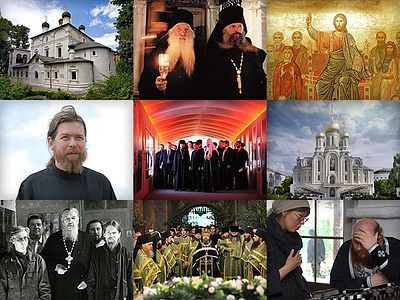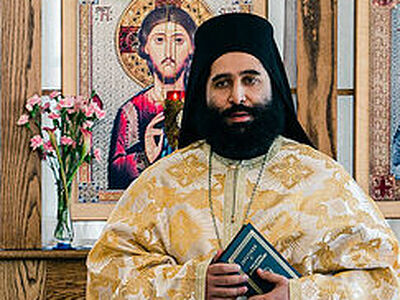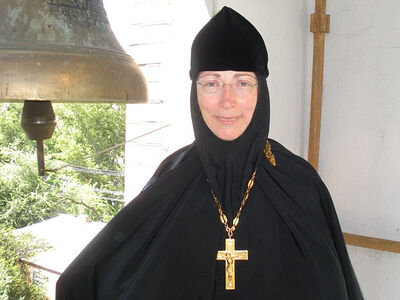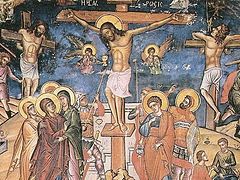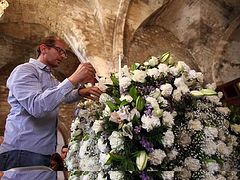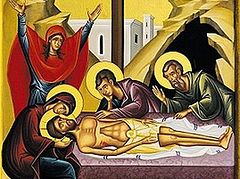Source: GreekReporter.com
April 29, 2016
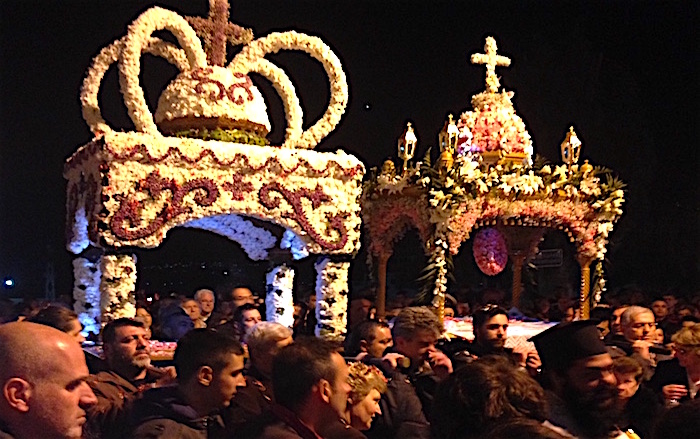
Good Friday is an eminently mournful day commemorating the Passion of the Christ across Greece. Even the most remote churches honor the tradition of the epitaph, filling the atmosphere with piety and devoutness.
In every Greek city, village or island, the Passion of the Christ is revived through various traditions. From the early morning hours in all the Greek churches, the Epitaph, decorated with flowers, is ready to receive the body of Jesus. In most areas, the epitaph procession begins around 9pm, but in some parts of the country procession takes place at noon or even on the morning of Holy Saturday.
In Skiathos, where the Athonite tradition is strong, the procession of the epitaph takes place at 5am on Holy Saturday. Meanwhile, in Ikaria, in a village called Christos Rachon, the mournful and solemn procession of the epitaph begins in the early morning hours and ends at the cemetery to honor the dead.
In Athens, in the Monastery of Kaisariani, the epitaph procession takes place during the day and is a unique experience for anyone in attendance. The epitaph comes out of the church around 2pm, with special permission from the Ministry of Culture since the monastery belongs to the Ephorate of Byzantine Antiquities.
The procession takes place on Mount Hymettus, through the flowery nature, while the Christian Youth Brotherhood chants.
In Corfu, the epitaph procession of the St. Spyridon Church takes place at 9am on Holy Saturday. In 1574, the Venetians wouldn’t allow the Orthodox community to have a procession on Good Friday, so the Corfiots decided to bring the epitaph along with the St. Spyridon procession.
This is the oldest and most devout procession that commemorates the miracle of Saint Spyridon, who saved the Corfiot people from famine. The procession moves to the mournful rhythm of the songs played by the city’s three main bands: “Hamlet,” the funeral march of Italian composer Faccio, “Calde Lacrime,” another funeral march by Italian composer Michelli, and finally, the funeral march from Beethoven’s “Eroica.”
After the procession, visitors and locals gather together in the main square, Liston, where at 11am they celebrate the First Resurrection. The bells start tolling joyfully and then “botides,” huge clay pots filled with water and laurel, and decorated with red ribbons, are thrown from balconies and windows, causing noise and excitement to anyone who attends the event.
In Greece, there is also the peculiar tradition of faithful people passing from under the epitaph, and it is considered to be a very pious habit.
Its meaning is people’s expression of the deepest reverence and faith to Jesus Christ, who sacrificed himself and suffered, by showing humility and putting themselves beneath him and beneath his miraculous and divine influence and blessing.



